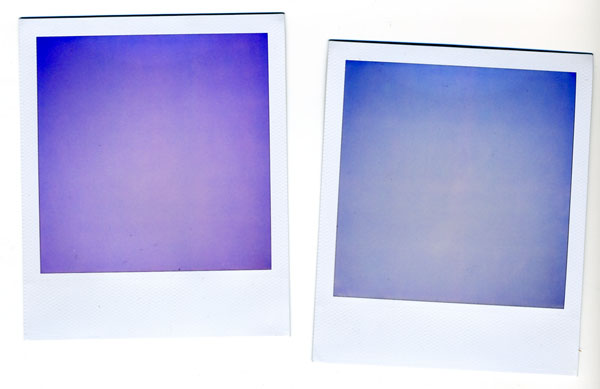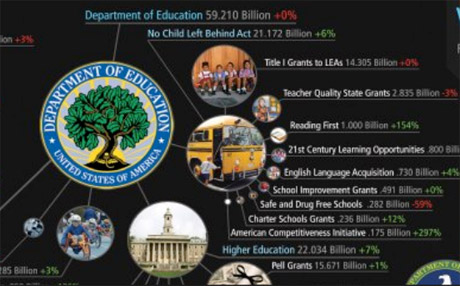Archive for November, 2008
Wassenaar: An internet photography magazine
artist interviews blog blogs internet neat projects photography
From the people of We Can’t Paint: Wassenaar
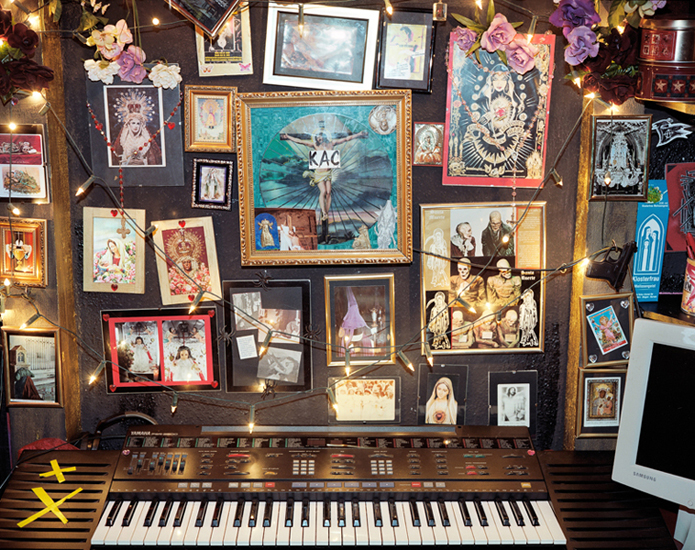
photo: Andrés MarroquÃn Winkelmann
From the Editor’s Letter about Wassenaar:
“Wassenaar is an Internet specific publication that focuses its curatorial eye on emerging photographers, photography books from established, independent, and self-publishers, as well as interviews conducted by bloggers. This simple formula, while structured much like a magazine, takes the ethos and subjective freedom of blogging by existing as both absent of commercial interests and free from a specific template. The ability to take risks in an online space means that the following issues of Wassenaar may only focus on a specific artist, type of photography, a single book, or even simply feature a collection of artist portfolios. In short, Wassenaar aims to be an online magazine that reflects its place within the web as an entity that continually evolves, never forgetting that this form publishing is indefinable.”
I heart art: T-shirts!
We’re going to make t-shirts for this holiday season…
Anyone (anyone?) want to vote for the design they like better?
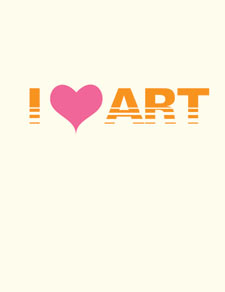
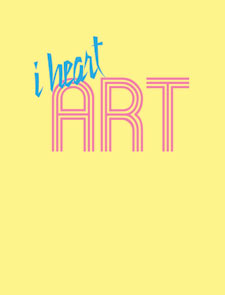
TPG #9: David Horvitz
Each time we get better and better proposals. Though fun, it makes our job challenging. So without further ado… we have chosen David Horvitz as the artist for TPG #9 (Winter 09: Release March 09).
David Horvitz was born in Los Angeles and currently lives in New York. He is an artist that works in many forms, including photography, books, curated projects, writing, multiples, and video. He has been featured internationally in exhibitions and publications, and has had solo shows in the US.
“Two photographs of the light in the sky on the 2008 summer solstice – the longest day of light in the year. Wake up before dawn and walk out to an empty field. When the sky begins to illuminate make the first photograph. Wait there the entire day. When the sky begins to darken make the second photograph.”
The aftermath: Healing
art and politics blog internet neat projects
In this election year, there has been a lot of energy focused on the “other side” of whatever your political views are. There’s blame for things that did or didn’t get passed, people who did or didn’t get elected, and things that could have been. Today I have had a couple of glimpses into the idea that many people know, deep down, that all of that is not productive.
From Ze Frank (internet creativicist and proprietor of The Show):
From 52 to 48 with love
“i would love to have a place for obama supporters, mccain supporters and supporters of third parties (over 1%) to reach out in a gesture of reconciliation…
simple messages from individuals.
perhaps it is naive. the differences are real, i know. but we have to repair the damage done from this election cycle somehow…
the fringes (all of them) have been allowed to dominate our conversations for too long. to create a cycle of hate, ill-will and revenge.”
From No on Prop 8:
“In working to defeat Prop 8, a profound coalition banded together to fight for equality. Faith leaders, labor, teachers,civil rights leaders and communities of color, Republicans, Democrats, and Independents, public officials, local school boards and city councils, parents, corporate law firms and bar associations, businesses, and people from all walks of life joined together to stand up against discrimination. We must build on this coalition in order to achieve equal rights for all Californians.
We achieve nothing if we isolate the people who did not stand with us in this fight. We only further divide our state if we attempt to blame people of faith, African American voters, rural communities and others for this loss. We know people of all faiths, races and backgrounds stand with us in our fight to end discrimination, and will continue to do so. Now more than ever it is critical that we work together and respect our differences that make us a diverse and unique society. Only with that understanding will we achieve justice and equality for all.”
A Conceptual Loom
artist resources blog contemporary art criticism TPG7
We’ve decided to elevate this piece by Eva Repo out of the comments section.
Text/ile includes the two conditions of the contemporary art object: tautology and mythology. These two conditions are the main forms of the object after 60′s, the so called conceptual object. Upon the management of their balance or imbalance is based the mass of all the theories and practices since then. The first years of that period there was a prominence of the tautological form. The object was a lectical, anatomical, logical extract. In the revolutionary 70′s the object had to abandon this introversial tautology and develop communicative patterns with the urban environment, the society, the humanity. The object releases all the mythology forms that used to expel. It becomes biographical, social, ethnographical. Since 2000, there is a great interest towards the mythological forms of the object as a light struggle towards globalization and leveling of cultures. The object reveals all the elements expressing its variation, codification and hetetotis (otherness). From another point of view there is the aspect of a new kind of colonization : the accumulation of a variety of ethnographic mythologies to the Western based institutional art system. But this comprises subjects of a future judgement.
According to the above standards, Maggie Leininger presents an object in various and overlapping levels of tautology and mythology. The first notice is the cover of some medical content. This box provides some information that stamp a kind of ‘scientificality’. And this is not a latency. It is the reliance of Leininger’s venture. On this first notice, the ‘form’ of the human genome is indicated and the content of samples is implied. The word ‘legend’ though is written and already provokes a different kind of expectations for the content of the box.
The content of the box are the metaphorical samples of a medical experiment. There are the modulors of Leininger’s experiment: the phenomenon of chromosomes, the procedures of a multiplicity and the one stroke procedure of creating from zero to a whole. Leininger does not aim to offer information or cognitive values. This is the point where she treats her object in a different way from what Joseph Kosuth maybe would do in the 1968, she skips its tautology and enters its mythology.
Weaving segments is the model of her research. Those black and white pieces of textile don’t offer any knowledge. Howbeit this technique is regarding to a strict rationalization as it follows specific traditions to produce the manufacture. The patterns are taken out of the box and they are exposed on the wall. This exposition creates the final impression of the object as the model and the prototype are conceived in the procedure of repetition and proliferation of the main pattern. This is the point where Leininger’s object exposes an irregularity. So far it can be described through all this reading of its readable layers. But now the exposition on the wall offers the optical obvious of the experiment. The object becomes an aesthetic item. The pile of the boxes in the corner is a hasty representation of the chromosome assumption and do not manage to complete as a concept and as an image the initial expectations. The textiles become an interesting gimmick in an unformed object.
The above formal debility is resolved by an extra connotation of Leininger’s project:
The technique used by Leininger provides her with the possibility of an interface with the economic and cultural conditions of her locality. The American textile workers lost their employment as the textils travel to Asia, South America and other places so as to be manufactured by cheaper hands. This long thread starting from the micro human structure to reach -theoretically- the macro structure of the contemporary economy, also represents the to-and-fro state of the conceptual and physical object between a tautology (now it becomes the tautology of the economic mechanism) and a mythology (the poetic weaving of textiles, plots and stories).
This concern of Leininger is creating a link to a feminine heterotis of object construction. It brings to mind the objects of Sheela Gowda who works with dyed ropes as metaphor for the umbilical cord and the birth, but also implies the Indian textile tradition and the colonization of their industry in 18th century. And a look to Sheela Gowda goes back to Eva Hesse and her almost common repetition practice. The long fiber of a connected feminine object is also an aspect of a feminine mythology. An expletory factor is that Maggie Leininger figures a consistent american allure, as a different kind of sensitivity in comparison to Gowda.
In conclusion, the Text/ile is a structure that is articulated in an acrobat’s way among critical points. It is an initial draft of a research in the system of chromosomes. It is the directing of the methodological tools for this research, the patterns of textiles. And it is the presentation of these pieces in a repetition formula and the implications of a transfer to a macro-level of the textile industry affairs. This procedure inevitably follows the moves of a conceptual loom as the conception of the object has to operate in to-and-fro and up-and-down levels of the whole scenery.
-by Eva Repo
Visualization of US discretionary spending
Death and Taxes:2009 is a representational poster of the federal discretionary budget; the amount of money that is spent at the discretion of your elected representatives in Congress. Basically, your federal income taxes. The data is from the President’s budget request for 2009. It will be debated, amended, and approved by Congress by October 1st to begin the fiscal year.
The poster provides a uniquely revealing look at our national priorities, that fluctuate yearly, according to the wishes of the President, the power of Congress, and the will of the people. If you pay taxes, then you have paid for a small part of everything in the poster.
Open it in fullscreen and you’ll have the rest of the day eaten up.
Funny- maybe I’m not looking hard enough, but somehow I can’t find the word art.
Dear Artists, we’re sorry.
To all those whom have submitted this round, we are very sorry that we haven’t fulfilled our promise to make our decision by the end of October. We will be working on it this week and will get back to you soon. Thank you for your patience. We’ve had some life events pop up that have postponed our decision.
Regretfully,
Eleanor and Oliver
Pocket Project
art market artist multiples blog events
More news on the art multiples on a quarterly basis (though not via subscription):
Though currently without a website, Pocket Projects is a curatorial initiative organized by Jason de Haan and Scott Rogers (both in Calgary, Canada). Pocket Projects commissions small editions of artist multiples on a quarterly basis. Justin Patterson‘s Hell’s Bells is the first project in this ongoing series.
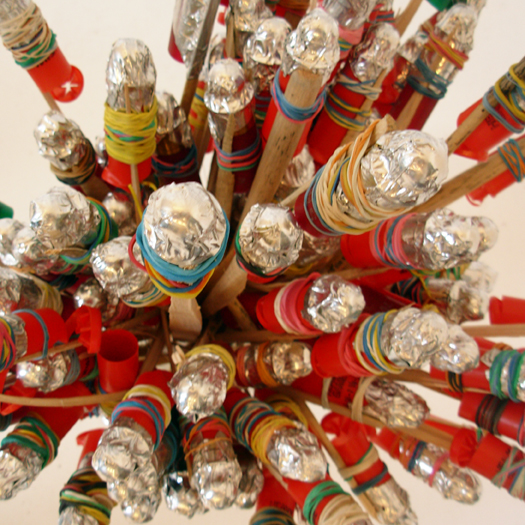
Photo courtesy of Pocket Project
On Halloween night (Friday, October 31st) please join us for the inaugural launch of Hell’s Bells a limited edition artist multiple project by Calgary artist Justin Patterson.
The launch will begin at 8pm in the Other Gallery at the Banff Centre (just upstairs from the Walter Phillips Gallery). Some refreshments will be available during the launch. Hell’s Bells multiples will be available for purchase during and after the launch at a price of $4.00 each. With your purchase you will receive one Hell’s Bell and the colour publication which accompanies the project. Proceeds from the sale go directly to the artists.
**Full disclosure: Rodgers is a TPG submittee whose proposal we still have in the maybe pile.
UPDATE: Due to unforeseen circumstances we are POSTPONING the Hell’s Bells launch, which was previously scheduled to happen on Halloween night (today!) All apologies for the mix up, but we will still be doing the launch it’s just going to be a little while longer. ![]() Sorry to anyone who had planned on attending the festivities in Banff.
Sorry to anyone who had planned on attending the festivities in Banff.
LINKS
Archives
Lego Hello World
I wish all my printers were made of legos.
LIFE photo archive hosted by Google
Images from Life Magazine going back to 1860′s, hosted by Google
Coming Face To Face With The President
Well crafted story about an under-heard point of view.
In California, Pot Is Now an Art Patron
A new funding source for the arts – reaping big rewards and funding many projects. It’s pot.
Notes on Portraiture in the Facebook Age
Celebrity Book Club: A List to End All Lists
Because, well, it’s sortof awesome.
Are "Artists' Statements" Really Necessary?
The pros and cons about that nemesis for most artists.
This to That
You tell it what you’ve got and it’ll tell you what to glue them together with.
Work of art: Online store for buyers, sellers
Not the TV show! Kelly Lynn Jones from Little Paper Planes is interviewed on her project, gives us a cheat sheet to local affordable art resources.


